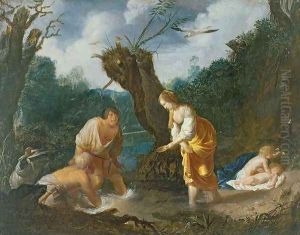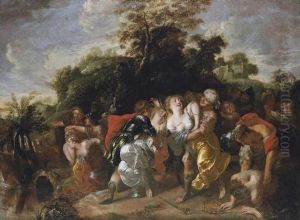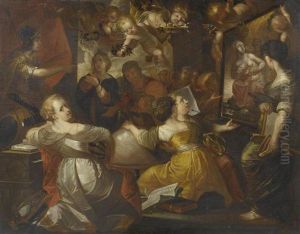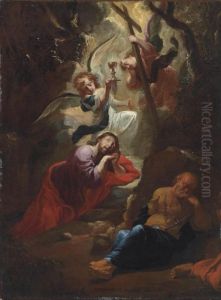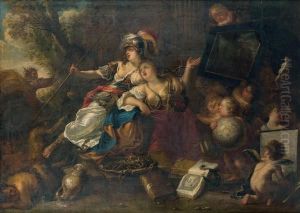Johann Hulsman Paintings
Johann Hulsman, also known as Jan Hulsmann, was a Baroque painter born in 1600 in Cologne, which was then part of the Holy Roman Empire. Not much is known about his early life, but he is recognized for his contributions to the art world during the 17th century, particularly in Italy and Germany. His works are characterized by the dramatic use of light and shadow, typical of the Baroque style, and he is known to have painted religious subjects, landscapes, and portraits.
Hulsman traveled to Italy in his youth, which was a common practice among artists of that period seeking to refine their craft and absorb the Italian influence, which was dominant in the arts at the time. It is believed that he was in Rome during a particularly vibrant time for the arts, which would have exposed him to the works of the great Italian masters. His Italian influences are evident in his compositions and his use of chiaroscuro, a technique popularized by Caravaggio, which involves a strong contrast between light and dark to achieve a sense of volume in modeling three-dimensional objects and figures.
After spending time in Italy, Hulsman returned to Cologne, where he became a significant figure in the local artistic community. His return to Germany marked a transference of Italian Baroque style to the German regions. He worked on various religious commissions, which were popular during the Counter-Reformation as the Catholic Church sought to use art as a means of religious expression and communication.
Johann Hulsman passed away in 1660 in Cologne. While he may not be as widely recognized as some of his contemporaries, his work remains an important example of the cross-pollination of Italian and Northern European art styles during the Baroque period. Unfortunately, due to the limited number of surviving works and documentation, Hulsman's oeuvre is not as well-documented as that of other artists from his time, which has somewhat obscured his contributions to the art historical canon.
